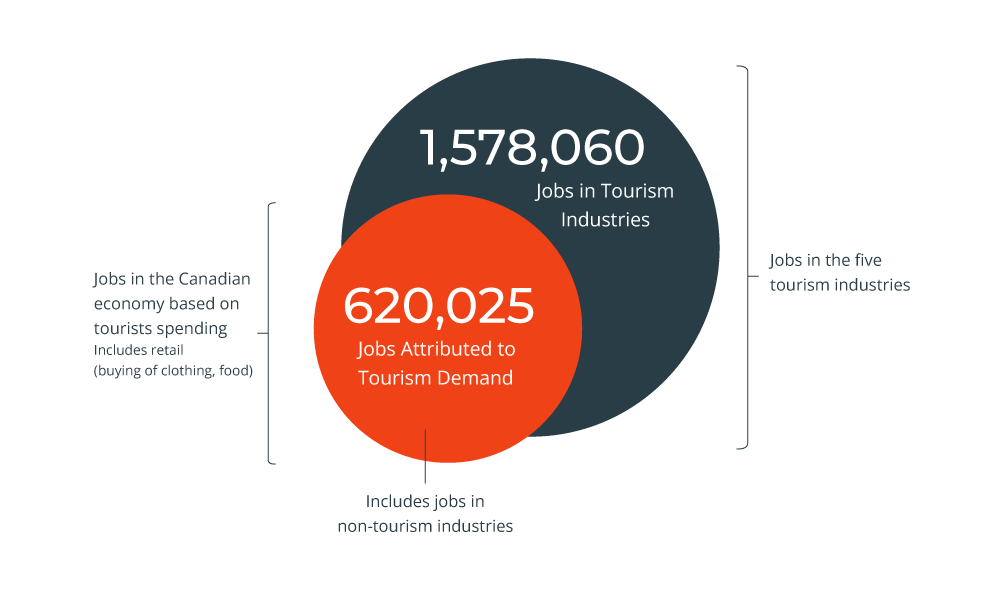Commissioned by Tourism HR Canada and produced by Statistics Canada, the Tourism Human Resource Module (T-HRM, previously the Provincial-Territorial Human Resource Module [PTHRM]), provides employment data for the tourism sector across the entire country, including the territories. It complements the new economy-wide HRM produced by Statistics Canada, which provides a useful point of comparison for the tourism sector.
Note: This release of the T-HRM includes data from 2009 to 2022.
The most recent update of the T-HRM shows that there were over 1.5 million people working in the tourism sector in 2022, excluding the self-employed. This was lower than in 2019, but a significant improvement since the height of COVID-19 pandemic impacts in 2020.
The T-HRM provides statistics for the entire sector and each of its five industry groups. This includes data on jobs, hours worked, compensation, and educational attainment. The first release of statistics are available by gender, by work status, by age group, by immigration status, and by province and territory. Data at the occupation level will be available in July.
It is important to note that the number of jobs reported in the T-HRM is different from the jobs numbers reported by Statistics Canada’s National Tourism Indicators (NTI):
- The NTI reports on “jobs due to tourism”. These are all the jobs in Canada supported by the money Canadian and foreign visitors spend and includes some jobs outside the tourism sector.
- The T-HRM reports on “jobs in tourism industries”. These are all the jobs within all five tourism industry groups that can be further subdivided into the 29 specific industries that are considered part of the tourism sector. Many of these jobs are supported by spending by local residents, particularly in industries such as food and beverage services and recreation and entertainment, which derive significant revenues from locals as well as Canadian and foreign visitors.

Highlights from the 2022 Tourism Human Resource Module
Below we highlight some of the key information from the 2022 T-HRM. A further summary of key statistics is available from Statistics Canada, and the complete data set will be uploaded to our Rapid reSearch resource shortly. Subscribe to Tourism HR Insider to be the first to know when this is available.
Note: When considering the wage data, it is important to recognize that these are aggregated to the industry group, rather than to the occupation level. This means it is not possible to infer wage gaps directly (differences in rates of pay for the same or comparable jobs), but only income gaps (coarse observations about different levels of income, regardless of occupations). This is particularly key when making observations around demographic categories, such as age and gender: wage data correlates with occupations, and those occupations are not evenly distributed across the population.
For specific data requests, please email research@tourismhr.ca.
